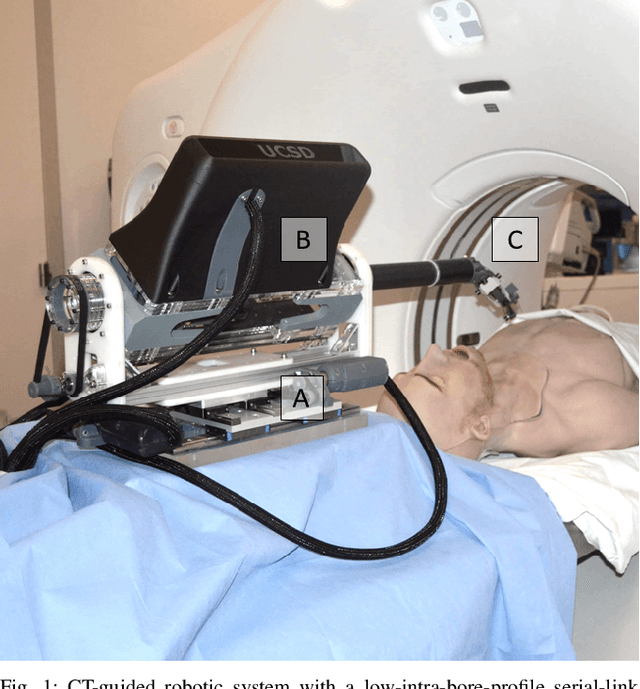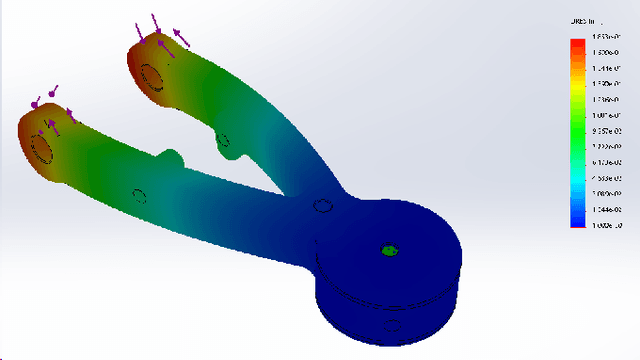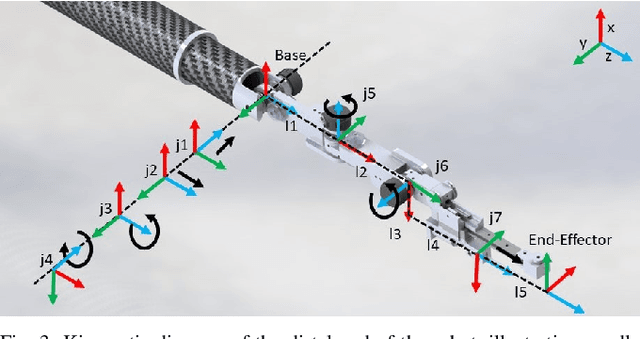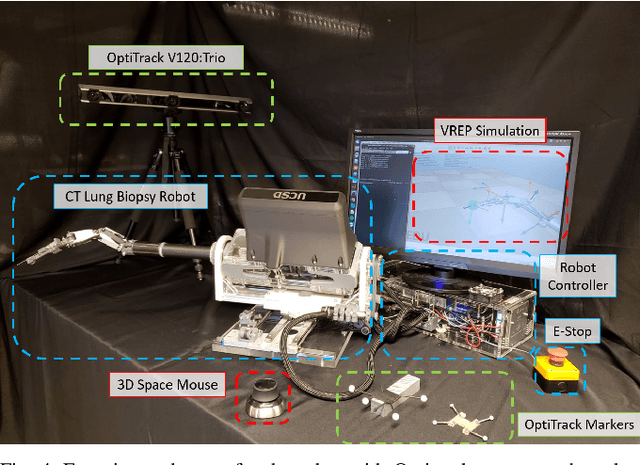Daniel B. Shak
An Open-Source 7-Axis, Robotic Platform to Enable Dexterous Procedures within CT Scanners
Mar 11, 2019



Abstract:This paper describes the design, manufacture, and performance of a highly dexterous, low-profile, 7 Degree-of-Freedom (DOF) robotic arm for CT-guided percutaneous needle biopsy. Direct CT guidance allows physicians to localize tumours quickly; however, needle insertion is still performed by hand. This system is mounted to a fully active gantry superior to the patient's head and teleoperated by a radiologist. Unlike other similar robots, this robot's fully serial-link approach uses a unique combination of belt and cable drives for high-transparency and minimal-backlash, allowing for an expansive working area and numerous approach angles to targets all while maintaining a small in-bore cross-section of less than $16cm^2$. Simulations verified the system's expansive collision free work-space and ability to hit targets across the entire chest, as required for lung cancer biopsy. Targeting error is on average $<1mm$ on a teleoperated accuracy task, illustrating the system's sufficient accuracy to perform biopsy procedures. The system is designed for lung biopsies due to the large working volume that is required for reaching peripheral lung lesions, though, with its large working volume and small in-bore cross-sectional area, the robotic system is effectively a general-purpose CT-compatible manipulation device for percutaneous procedures. Finally, with the considerable development time undertaken in designing a precise and flexible-use system and with the desire to reduce the burden of other researchers in developing algorithms for image-guided surgery, this system provides open-access, and to the best of our knowledge, is the first open-hardware image-guided biopsy robot of its kind.
 Add to Chrome
Add to Chrome Add to Firefox
Add to Firefox Add to Edge
Add to Edge